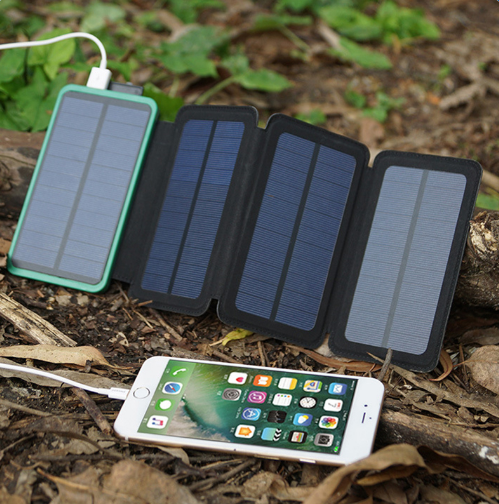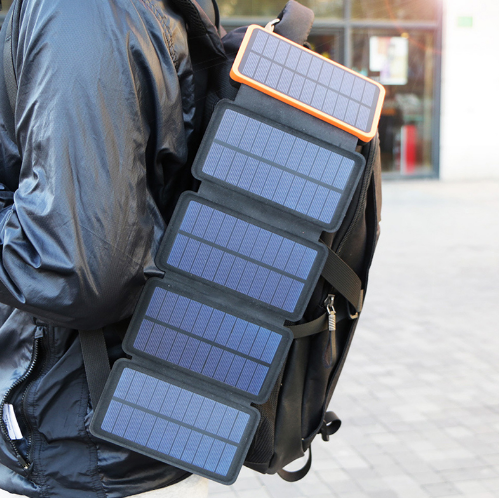Which Is Better: Solar Power Banks or Regular Power Packs?
Aug. 22, 2024
In an age where portable electronic devices have become an integral part of our lives, the need for reliable power sources on the go has never been greater. Both solar power banks and regular power packs offer solutions to keep our smartphones, tablets, and other gadgets charged. However, the question remains: are solar power banks better than regular power packs? Let's explore the advantages and disadvantages of both options to help you make an informed decision.
The Basics of Solar Power Banks
Solar power banks are unique in that they are equipped with solar panels that allow them to harness energy from the sun. This energy is then stored in an internal battery for later use. The primary advantage of a solar power bank is its ability to charge itself while exposed to sunlight, making it an eco-friendly choice.
Advantages of Solar Power Banks
1. Environmentally Friendly
One of the most significant advantages of solar power banks is their eco-friendliness. They harness renewable solar energy, reducing the reliance on traditional electricity sources and minimizing the carbon footprint associated with charging your devices.
2. Self-Charging Capability
Solar power banks can recharge themselves while you're on the move. When you're outdoors, you can attach them to your backpack or place them in direct sunlight, allowing them to absorb solar energy and store it for later use.
3. Ideal for Outdoor Activities
If you're an outdoor enthusiast, a solar power bank is an excellent companion for hiking, camping, or any activity that takes you away from traditional power sources. It ensures that you'll have a reliable source of energy for your devices.
Disadvantages of Solar Power Banks
1. Limited Charging Speed
One of the drawbacks of solar power banks is their relatively slow charging speed. They require direct sunlight for efficient charging, and the process can take longer compared to traditional charging methods.
2. Dependence on Weather
Solar power banks are highly dependent on weather conditions. Cloudy days or limited sunlight can hinder their ability to charge efficiently, making them less reliable in certain situations.
3. Initial Cost
Solar power banks tend to be more expensive than their regular counterparts due to the cost of integrating solar panels and the associated technology.
The Basics of Regular Power Packs
Regular power packs, often referred to as power banks or portable chargers, are compact devices that store electrical energy and can be used to charge your devices via USB connections. They come in various sizes and capacities to suit different needs.
Advantages of Regular Power Packs
1. Fast Charging
Regular power packs are known for their fast charging capabilities. They can quickly charge your devices, making them an efficient solution when you need a quick power boost.
2. Consistency
Regular power packs provide a consistent source of power, regardless of weather conditions or location. They don't rely on sunlight, making them a dependable choice for all situations.
Related articles:
The Ultimate Guide to TFT Display Modules
Understanding Glue Gun Heating Elements: Functionality, Types, and Applications
3. Wide Availability
How a 4G WiFi Dongle Can Save Your Internet?
What factors influence diamond grinding wheel dresser purchases?
How do Platinum Coated Titanium Anodes outperform traditional alternatives?
Understanding Ohio Sliding Spindle: A Complete Guide
Mastering OHIO 800 Engraving Stylus: Tips & Tricks Revealed!
Regular power packs are widely available and come in various sizes and capacities. You can easily find one that fits your specific needs and budget.
Disadvantages of Regular Power Packs
1. Limited Capacity
The capacity of regular power packs is limited by their size. While they can provide multiple charges for smartphones, they may not be suitable for extended trips without access to traditional power sources.
2. Not Environmentally Friendly
Regular power packs rely on electricity from the grid for charging, which may not align with environmentally conscious consumers' preferences.
Which Is Better: Solar Power Banks or Regular Power Packs?
The choice between a solar power bank and a regular power pack ultimately depends on your specific needs and preferences. Here are some key considerations to help you make an informed decision:
Use Case
- Solar Power Banks: Ideal for outdoor enthusiasts, eco-conscious individuals, and those who need a power source in remote areas with limited access to electrical outlets.
- Regular Power Packs: Suitable for everyday use, quick recharges, and situations where reliability and speed are crucial.
Charging Speed
- Solar Power Banks: Charging speed can be slow, especially on cloudy days.
- Regular Power Packs: Offer consistent and faster charging speeds.
Environmental Impact
- Solar Power Banks: Highly eco-friendly, as they rely on renewable energy sources.
- Regular Power Packs: Environmental impact depends on the source of the electricity used to charge them.
Convenience
- Solar Power Banks: Require access to sunlight for charging, making them less convenient in certain situations.
- Regular Power Packs: Provide a more convenient and predictable power source.
Conclusion
Both solar power banks and regular power packs have their merits and drawbacks. Your choice should align with your usage patterns, environmental concerns, and charging speed requirements. Regardless of your decision, these portable power sources have revolutionized the way we stay connected in an increasingly mobile world.
Related articles:Master Diamond Engraving: Wingless Stylus Tips & Tricks!
How Explosion Proof LED High Bay Lights Work
Your Guide to Choosing the Right Capacitor Bank Supplier
Baseband Unit (BBU): What Does BBU Mean?
How Portable Explosion Proof Lighting Ensures Safety?
Choosing the Right Capacitor Bank Supplier: Essential Tips
Power Quality Projects: 5 Essential Tips for Success
147
0
0



Comments
All Comments (0)